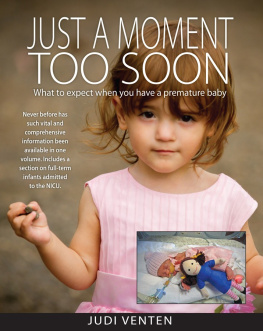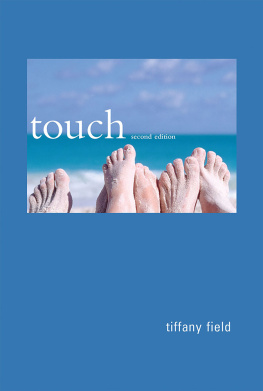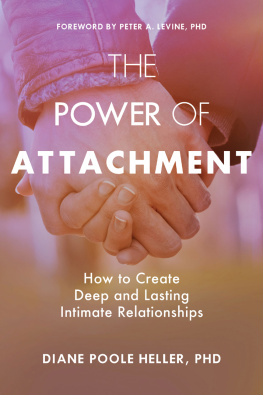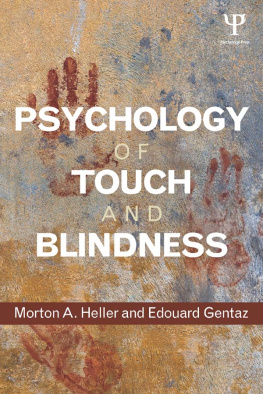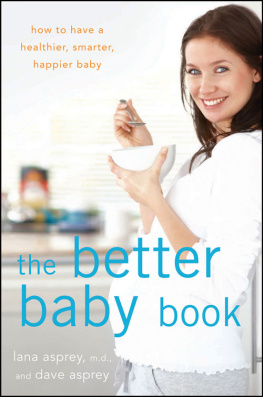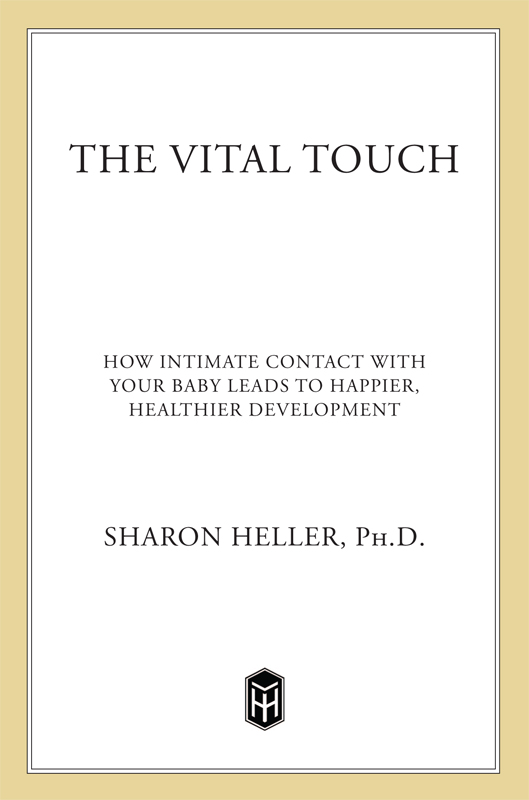Contents
Guide

The author and publisher have provided this e-book to you for your personal use only. You may not make this e-book publicly available in any way. Copyright infringement is against the law. If you believe the copy of this e-book you are reading infringes on the authors copyright, please notify the publisher at: us.macmillanusa.com/piracy.
Contents
In memory of my father,
Seymour Heller (19211996)
and his tender touches
So the child learns life within human arms.
It learns to eat to laugh, to play, to listen,
to watch, to dance, to feel frightened
or relaxed, in human arms.
Margaret Mead, on Balinese childrearing practices
Acknowledgments
I thank colleagues Gene Anderson, Ronald Barr, Angie Clausen, Virginia Colin, Daniel Freedman, Tiffany Field, Marshall Klaus, Steven Halpern, James McKenna, John Money, and Edward Tronick for their invaluable input in various parts of the book. I greatly appreciate the perceptive suggestions of friends Ileana Basquez, Hilary Liebowitz, and Marilyn Stephan, who each read different drafts of the manuscript. Special thanks to friend and colleague Cheryl Mroz for ongoing feedback and support throughout this project.
I am enormously grateful to my editors at Holt, Theresa Burns and her assistant Amy Rosenthal, for leading me in the right direction and helping me to pull it all together. And I thank my agent, Sherry Bykofsky.
Thank you Ashley Montagu, whose landmark book Touching inspired and informed this project, and whose encouragement, friendship, wit, and cheerful postcards carried me through its five-year evolution.
Last, I want to thank Patricia Crittenden for her profoundly illuminating theories on attachment and our many long conversations during which she taught me how to better understand what underlies human relationships. Had I not been touched by her brilliance, this book never could have evolved.
Introduction
When I was four, I had my tonsils removed. More than forty years later, the experience reels back to me, scene by scene, like a home moviea bad one.
I am lying alone in a hospital crib, crying. No one comforts me. I am taken on a long, lonely trip down a stark white corridor. Lying on my back on a cold, stiff cart, I peer in panic at the bright walls and white coats above me. Doctors and nurses hover over me. A doctor puts an ether mask on my face. Count to ten backwards, he says.
I am then at home, sitting on my bed and crying frantically. My mother and grandmother are trying to force an aspirin down my throat. The harder they try, the harder I cry and push them away. From beginning to end, the experience was one of terror and loneliness. Its obvious why: Missing from the script was gentle, soothing touch.
Years later, again waiting to go under the knife for something quite minor, I felt a reverberation of the early panic. But now I had a better scriptwriter. Out of nowhere appeared two Filipino nurses by my side. Its time to go to the operating room, one whispered with a gentle smile, as she tenderly caressed my cheek. Down that long, cold corridor they rolled meall the while softly stroking my cheek, my brow, my forehead, and gently repeating, Its okay, Sherry, its okay. I no longer felt afraid. Why should I? I was a baby, safely back in my mothers arms.
I think it telling that the two nurses who nurtured me en route to surgery were from the Philippines. In the East, societies tend to fall on the high-touch end. This comfort with close contact starts in infancy, with mother and infant together most of the day. Here in the United States, which is a low-touch society, mothers and babies are apart most of the day, a fact that ranks our infants among the least held on this earth.
In natures nativity scene, mothers arms have always been babys bed, breakfast, transportation, even entertainment, and, for most of the worlds babies, they still are. For more than a million years, mothers have carried their infants almost continuously, slept with them at night, nursed them frequently the first two to four years of life, and offered immediate comfort.
But in a blink of evolutionary time, weve altered the way humans have always lived on this earth, straying far from the intimate connectedness firmly rooted in forces of natural selection. Rather than keeping our babies on our bodies, we cache them in a container, transport them in buggies, breastfeed for a short period, if at all, and often sleep in separate rooms. When they cry, our first reaction is frequently to offer a pacifier or shake their buggies before picking them up. Many of us return to work before our babies complete the infancy period.
With our babies more often in a container than in our arms, our infants are at odds with their evolution, as anthropologist James McKenna put it. This is no small problem. We may live in the Cyberspace Age, but our brains remain grounded in the Stone Age, the way humans have lived for 99 percent of our existence on this earth. Our brain, particularly the old mammalian part called the limbic system, which governs our emotions, is ancient. Darwinian Man, though well-behaved, / At best is only a monkey shaved, says a W. S. Gilbert song; scientists are now confirming this tongue-in-cheek lyric. So old is our brain that humans are 98.4 percent genetically identical to chimps and early humans. This means that nearly all our biochemistry and physiology are fine-tuned to conditions of life that existed when we were hunters and gatherers. And in that lifestyle, babies were kept on or near their mothers, their source of safety. After eons of such behavior, the babys brain evolved through natural selection to expect life to be a womb with a view, as Ashley Montagu phrased it in Touching, with the mothers brain hard-wired to provide that closeness.
The need to stay in touch hasnt changed: At the sight of our babies, our fingers itch to cuddle, stroke, and fondle them. What has changed is our environment. We opt for the buggy rather than the Snuglie, the crib rather than the parental bed, the swing rather than the rocking chair, because cultural values and customs discourage us from freely following our natural maternal feelings for intimacy and from responding fully to our babys signals for closeness.
The first cultural shift to discourage closeness is equating touch, and therefore intimacy, with sexuality. Touch has become a dirty word. Because of our disturbingly high rate of childhood sexual abuse in this country (current figures estimate that 32 percent of children are affected) and the backlash that accompanies it, innocent touch can be misconstrued. As a result, parents who mistrust each other are more careful of acts that might presume impropriety. Nudity, co-sleeping, co-bathing, kissing on the lips, hugging, and holding unclothed childrenall are often done, if at all, with some hesitancy, even with the very young child.
And then theres the issue of dependency. Obsessed with self-reliance, we demand early independence of our infants from our bodies and supreme independence for ourselves. In this way, we feel that we ensure that our infants dont get drunk with desire for hugs and later refuse to let go and we prevent our own cups from running dry.
Of course, there are those brave enough to transgress our cultures tacit law against holding babies too muchcarrying their infants in slings, sleeping with their babies, refusing to wean early. But to do so they must fly under the radar of the touch police, who arch their brow, point their finger, and warn, Youll spoil that baby! Sorry, we need to tell them, our babys genes beg to differ. Babies were meant to be held for hours, for days, and especially for nights. Touch is not an emotional fringe benefit for infants. Its as necessary as the air they breathe.


